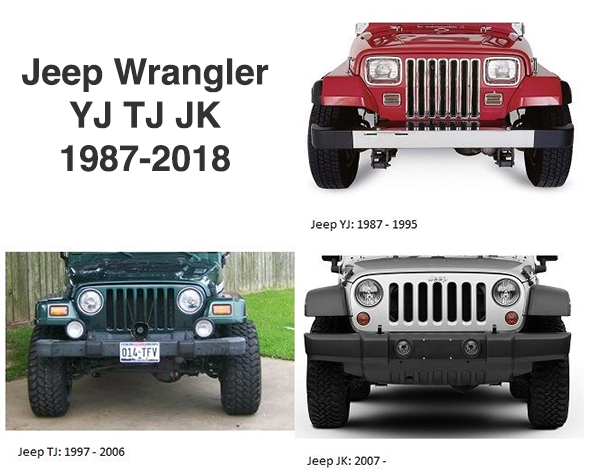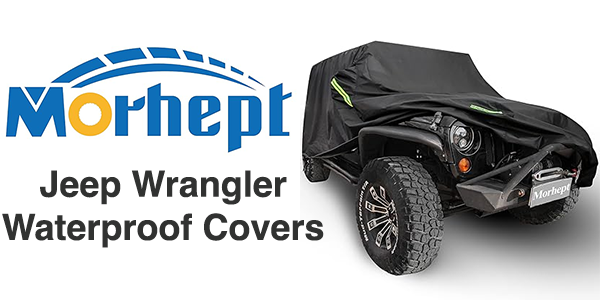This post contains affiliate links. If you click on a link and make a purchase, we may earn a commission at no additional cost to you.
The Jeep Wrangler, an icon of off-road prowess, has evolved not only in design but also under the hood. From its humble beginnings to the modern innovations, each engine tells a tale of performance, efficiency, and adaptability. Join us on a journey through time as we explore the various engines that have powered the Jeep Wrangler from its inception to the present day.

I. The Early Powerhouses: Oldest to Mid-2000s
A. 2.5L AMC Inline-4 (1987-2002):
- Introduction: The Wrangler’s early years featured the 2.5L AMC Inline-4, known for its reliability and simplicity.
- Off-Road Prowess: Although not a powerhouse, this engine was a workhorse, well-suited for off-road adventures.
- The AMC 150 (2.5L) I4 engine was used in mid 80s Jeep CJ-5s and CJ-7s, through to the Jeep Wrangler YJs, Jeep Cherokee XJs, MJs, and Jeep Wrangler TJs through the 2001 model year.
B. 4.0L AMC Inline-6 (1987-2006):
- Legendary Status: The 4.0L Inline-6 gained legendary status for its durability and torque.
- Renowned Off-Roader: Powering Wranglers through challenging terrains, this engine became synonymous with the Jeep brand.
- The AMC 242 (4.0L) I6 engine is used in late 80s Jeep Cherokee XJs and MJs and in 90s Jeep Wrangler YJs, TJs and also Jeep Grand Cherokee ZJ’s.
II. Transition Era: Mid-2000s to Early 2010s
A. 3.8L Chrysler V6 (2007-2011):
- Introduction of V6 Power: The 3.8L V6 marked a shift toward V6 engines, providing a boost in power.
- Mixed Reception: While not as beloved as its predecessor, the V6 offered improved highway performance.
- 3.8L Engine in 2007-2011 Jeep Wrangler JK Models.
III. Modern Powerplants: Late 2010s Onward
A. 3.6L Pentastar V6 (2012-Present):
- Game-Changing Performance: The 3.6L Pentastar V6 revolutionized the Wrangler’s performance.
- Versatility: Known for its balance of power, efficiency, and responsiveness, the Pentastar V6 became a staple in modern Wranglers.
- 3.6L Engine in 2012-2018 Jeep Wrangler JK Models.
B. 2.0L Turbocharged Inline-4 (2018-Present):
- Turbocharged Efficiency: The 2.0L Turbocharged Inline-4 introduced a more fuel-efficient option without sacrificing power.
- eTorque Mild Hybrid System: Some models feature the eTorque mild hybrid system for improved low-end torque and fuel efficiency.
- Found in Jeep Wrangler JL Models.

C. 3.0L EcoDiesel V6 (2020-Present):
- Diesel Power: The 3.0L EcoDiesel V6 caters to those seeking enhanced torque and fuel efficiency.
- Off-Road Capabilities: Known for its off-road capabilities, the EcoDiesel broadens the Wrangler’s appeal.
- Found in Jeep Wrangler JL Models.
IV. Looking Ahead: Future Powertrains and Innovations
A. Hybrid and Electric Concepts:
- Hybrid Wrangler: Jeep has teased hybrid concepts, hinting at a more sustainable future for the Wrangler lineup.
- Electric Possibilities: As the automotive landscape evolves, the Wrangler may see electric powertrains in the coming years.
The Jeep Wrangler’s journey through different engines reflects not only technological advancements but also a commitment to meeting the diverse needs of its passionate fanbase. From the simplicity of the early Inline-4 to the powerful Pentastar V6 and the eco-friendly options of today, each engine has played a crucial role in shaping the Wrangler’s identity. As we look ahead to potential hybrid and electric models, the Wrangler continues to adapt, ensuring it remains a trailblazer in both off-road capability and sustainable innovation. The story of Jeep Wrangler engines is a testament to the brand’s enduring legacy and its readiness for the roads—and off-roads—ahead
This post contains affiliate links. If you click on a link and make a purchase, we may earn a commission at no additional cost to you.

































